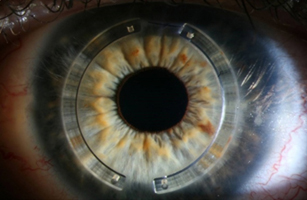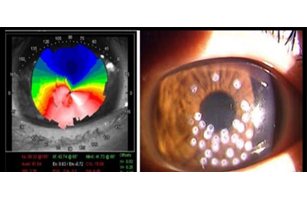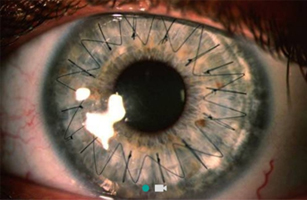
We complete the conversation of Dr. Muhammad Hantira - Honorary Assistant Professor - Umm Al-Qura University - Saudi Arabia about the latest methods of treating keratoconus, including:

It is a modern technique in which a transparent corrector is used for the shape of the cornea in the shape of an arc and is surgically placed across the periphery of the cornea of the eye to reshape the front surface of the eye for clearer vision.
Implantation of corneal correctors is required for patients with keratoconus whose condition reaches the point where the use of contact lenses and eyeglasses becomes unhelpful.
Several studies have demonstrated that this type of treatment provides the best results available for eyes with keratoconus. This type is also removable and removable. This surgical intervention only takes about 10 minutes.
This type of treatment may delay, but not prevent, corneal transplantation if the disease continues to progress.
• TOPOGRAPHY-GUIDED CONDUCTIVE KERATOPLASTY RADIO WAVE TREATMENT

While some studies are still being done on this type, some early results showed that this method works to smooth out irregularities in the shape of the corneal surface of the eye.

Dr. Hantira explained:
Some people with keratoconus cannot tolerate rigid contact lenses, or have reached a stage where contact lenses or any other treatments have become unhelpful in providing acceptable vision.
The last treatment that can be resorted to is a new cornea transplant. But even after a cornea transplant, you may still need to wear contact lenses or eyeglasses.